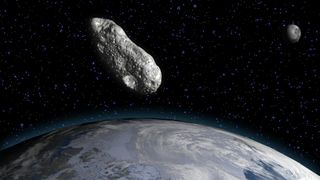When the James Webb Space Telescope examined young galaxies with its Near Infrared Camera (NIRCam), it uncovered the messy early stages
of formation in these distant objects. (Image credit: NASA, ESA, CSA, STScI, B. Robertson (UC Santa Cruz), B. Johnson (CfA), S. Tacchella
(Cambridge), P. Cargile (CfA))
Like cosmic toddlers, galaxies in the young universe were messy and had difficulty settling down, a new study shows.
Using the powerful James Webb Space Telescope (JWST), scientists peered at more than 250 galaxies in the early universe. The research team charted the movement of gas long ago, when the universe was growing up — between 800 million and 1.5 billion years after the Big Bang. (The cosmos is roughly 13.8 billion years old.)
Their findings, published Tuesday (Oct. 21) in the journal Monthly Notices of the Royal Astronomical Society, show that galaxies were restless in their youth.


















